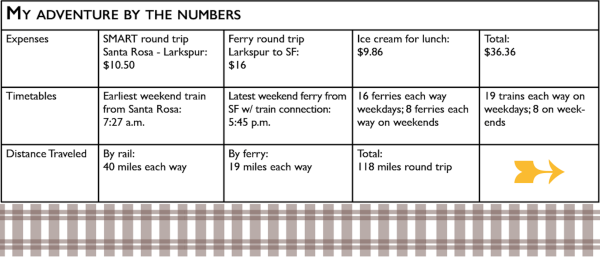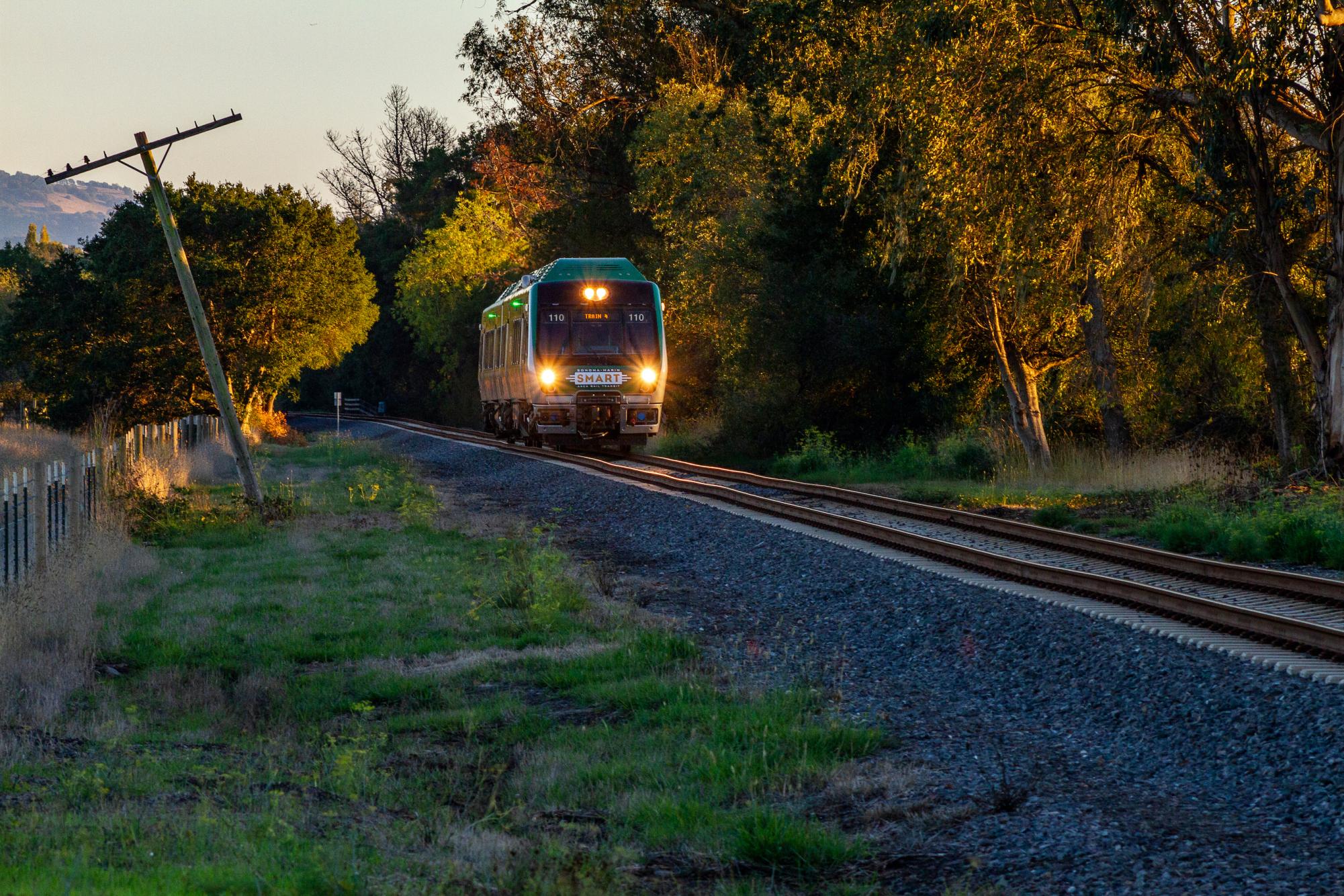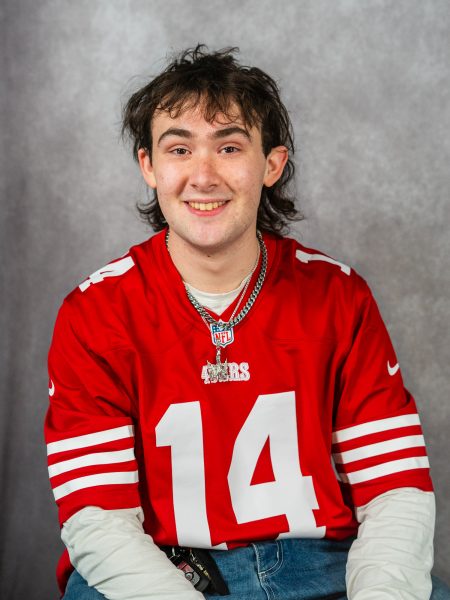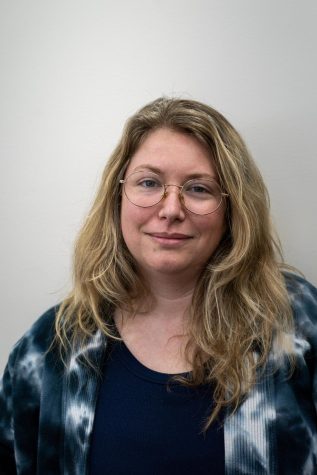My first journey on the SMART Train started at the Downtown Santa Rosa Station in Historic Railroad Square. As somebody who loves trains, I’ve been waiting to ride it, and this story was the perfect excuse to try it out. I rode the train from downtown Santa Rosa to Larkspur and took the Golden Gate Ferry from Larkspur to the San Francisco Ferry Terminal to test the viability of the transit system and share facts with readers.
The seats are quite plush and even have armrests, though they are really small and not very useful for resting your arms. Several seats on the train include tables for working, which I tried. The ride was rather bumpy, but not unmanageably so. It took a second to get used to it, but after the downtown Petaluma stop, I had adjusted and the journey grew much smoother.
The train was quiet, but not empty as some political commentators and opinionated community members would have you believe. A handful of people entered and exited at each stop and lots of riders used the train for short trips.
Time for some quick facts.
SMART stands for Sonoma Marin Area Rail Transit. The R stands for rail and not rapid, which makes a lot of sense if you’ve ever ridden the thing because it is not exactly a fast way to travel. Each train runs on clean diesel engines with top speeds of 80 miles an hour, but those speeds are only maintained through certain corridors. Trains arrive and depart semi-hourly — the schedule runs on odd hours with one trip heading south from the Sonoma County Airport stop at 2:53 p.m.
Ridership data collected by SMART from August 2023 shows that almost 3,000 rides are taken each week, with 72,171 rides in total that month. The annual ridership has seen a dramatic increase in the past year, with 640,099 rides taken from July 2022 to June 2023, compared to only 354,328 in the previous 12 months.
The journey through Santa Rosa, Cotati and Rohnert Park is filled with suburban scenery and is unremarkable, but once you reach Petaluma, the views improve. Rolling hills and farm fields replace the backends of warehouses and housing developments.
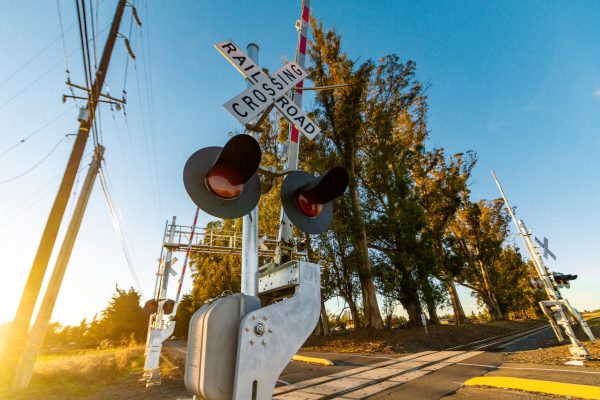
After the train left the Downtown Petaluma station at 220 Lakeville Street and rumbled towards Novato, I moved to the next car and spoke with Cyndi Potter and her brother who rode with their 95-year-old father. They choose SMART because of its accessibility features as well as the views. They said they could easily get their father’s wheelchair onto the train and store it while they rode. One thing the group misses is the concession cart that the trains used to have.
“You could buy a beer, you could get a drink, and I think they stopped that before COVID,” Cyndi Potter said.
They were also happy to see the new SMART Connect shuttle program, which will take you from the Sonoma County Airport stop at 1130 Airport Boulevard to the airport itself, covering the half-mile distance between the two.
You can also plan a day trip with the SMART shuttle and take it to various wineries and breweries in the area around Windsor and the airport, a great option if no one in your group wants to drive. Since the Potter family are all over the age of 65, the roundtrip for three people cost $18.
When asked for advice for anyone skeptical or unsure about the train, Potter said, “Just get the app and go for a ride.”
Potter emphasized that she swore by the SMART app, and it’s easy to see why. I think I may have overpaid during the journey because I paid the conductor on the train who walks the car with a credit card reader accepting payments, but I also used my Clipper Card to tap in and out when I started and stopped riding, and I bought a ticket at one of the Kiosks that every station has.
This was a silly mistake, but it gave me insight as to how I will buy tickets in the future, and I think Potter was correct in her endorsement of the app. The user interface is clean and minimal, and you can buy a ticket with your credit card or Apple Pay in the app. You simply select your starting point and destination, and the app calculates the fare. As an adult, the maximum fare is $15 for one day, meaning once you hit that amount, you won’t pay any more. This means that, in theory, my journey should have only been $15 for a full round trip from Santa Rosa to Larkspur and back.
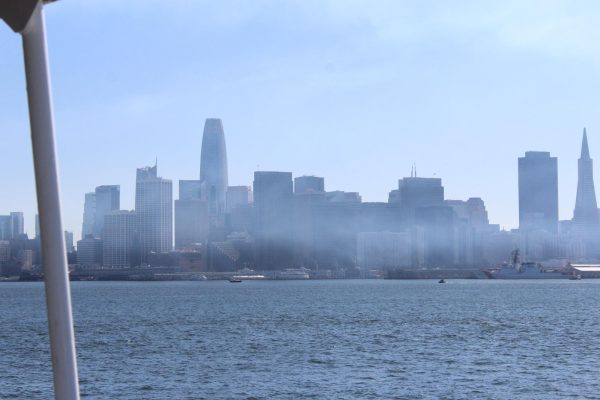
For the final leg of my trip, I took the Golden Gate Ferry from Larkspur to the San Francisco Ferry Building for a late lunch. A trip on the ferry from Larkspur to the city is $14 for adults, and $7 for people over the age of 65 or youth between ages 5 and 18. Children under 5 ride free. The ferry ride is always scenic and smooth sailing across the bay, but this time two unusual sights added to the experience. A person on a jetfoil surfboard rode the wake of the ferry near Larkspur. This surfboard hovers above the water using hydrofoil technology much like how the Golden Gate Ferry reaches its top speed of 36 knots.
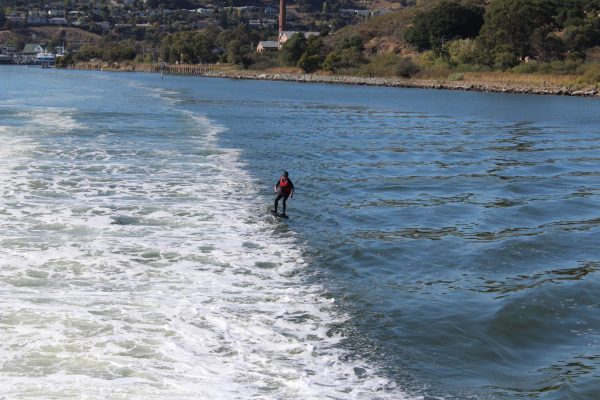
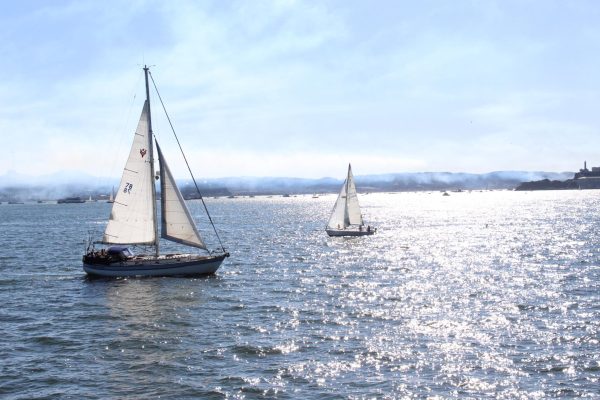
Midway through the 30 minute ride, planes spiraled through the sky, coming within 100 feet of the boat. The famous Blue Angels, a non-combat team of United States Naval jets that perform skywriting and complicated aerial maneuvers, were putting on their annual show. The planes dove towards the city and put on a spectacular performance. I am only patriotic on a handful of occasions: when the Olympics or World Cup comes around, when a European “person” talks trash on the internet, on the Fourth of July and when the military-industrial complex rolls out its high-flying supersonic advertising. The Blue Angels managed to stir some sort of patriotism from deep within me that day.

While at the ferry building I had an excellent lunch of *checks notes* just ice cream. That wasn’t for a lack of options; the ferry building has a whole host of options from barbecue to burgers and at least two ice cream shops. Yet I am a slave to my passions, ice cream being one of them, and the soft serve was delicious.
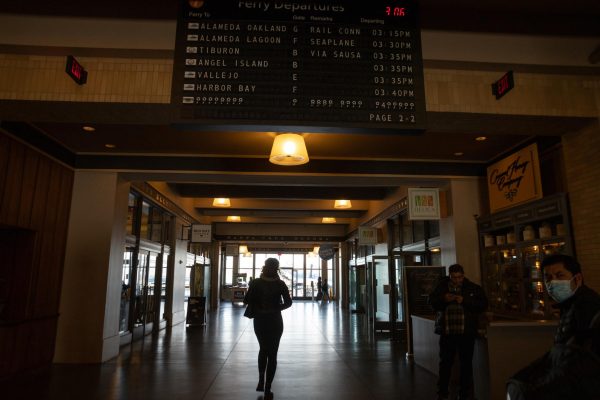
My trip home was equally scenic, though uneventful. The train cars were much fuller with commuters and day-trippers. I bore witness to what the train looked like at its most efficient. A handful of people entered and exited at each stop, handily beating traffic on return to Santa Rosa.
All in all, I would consider my journey a success. I learned all about SMART by riding it, I ate some really tasty ice cream and now I have an article I can publish. I learned about how easy the train is to use — very; how fast it is — relatively; how many people use it — kind of a lot; and how useful the service will be for me — somewhat.
SMART is not a perfect transit system; it is not a fast way to travel and there are a limited number of stops, so getting to and from a train requires planning. With the awkward arrival and departure times, your trip needs to be specially planned around the SMART train unless you want to run the risk of a long wait time at a station. Yet the future looks bright for the system, with expansion to Windsor and Healdsburg already underway. Hopefully we will live to see a full expansion to Cloverdale. There is also another planned Petaluma North SMART Station, which would drop students at 320 Corona Rd., which is about a mile from the SRJC Petaluma campus, a distance the SRJC hopes to cover with a bus or shuttle.
If you haven’t taken a SMART train trip yet, I suggest following Potter’s advice: “Just get the app and go for a ride.”
